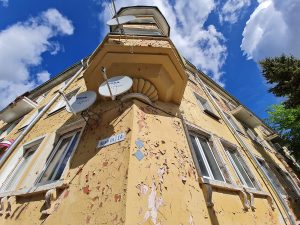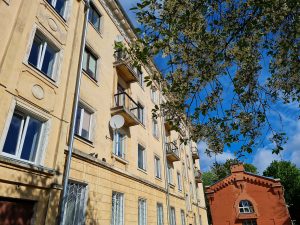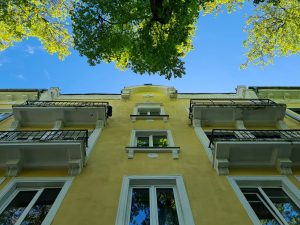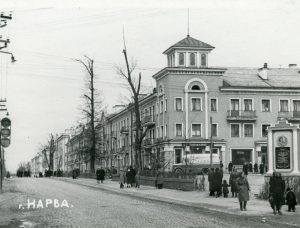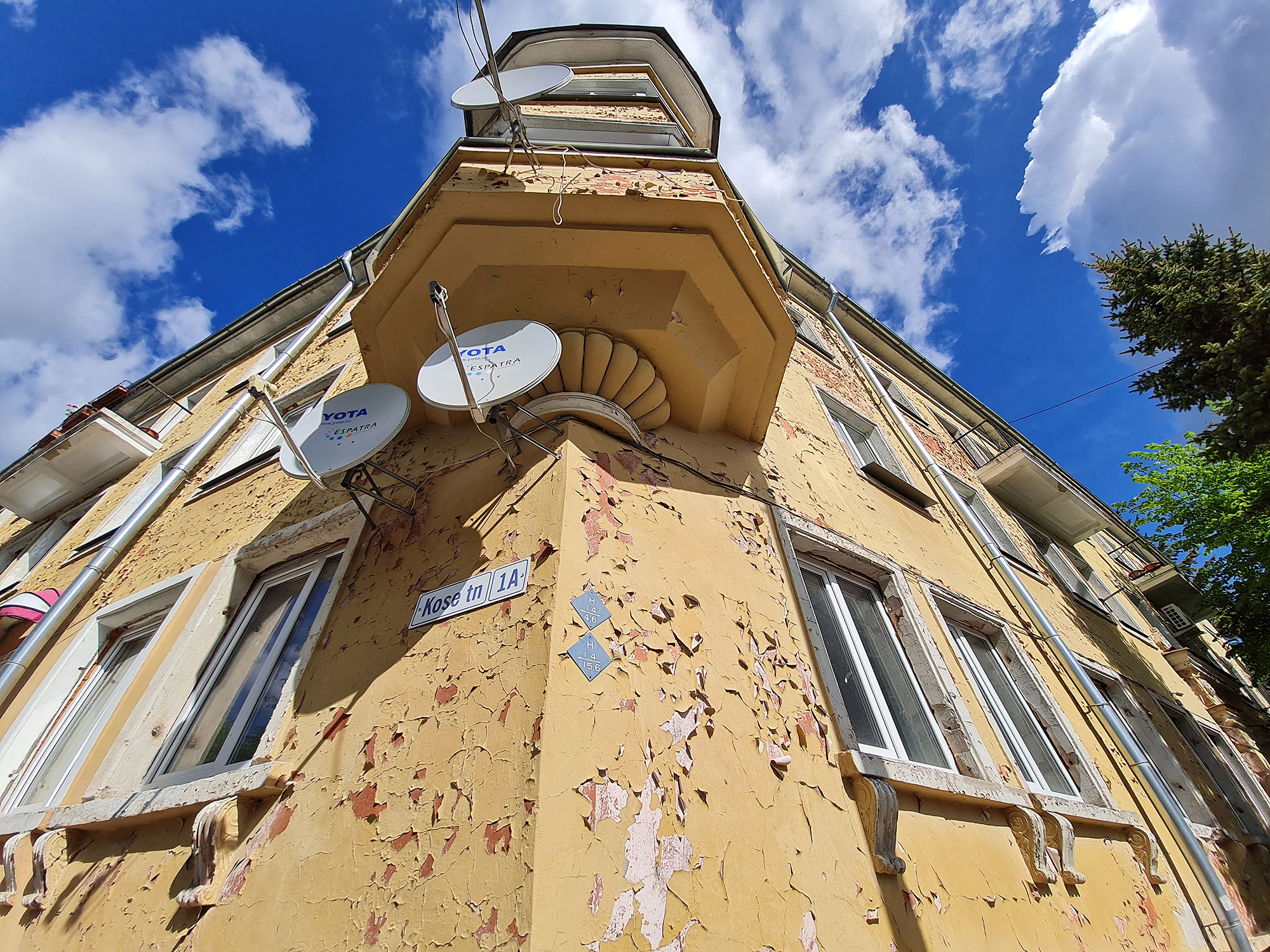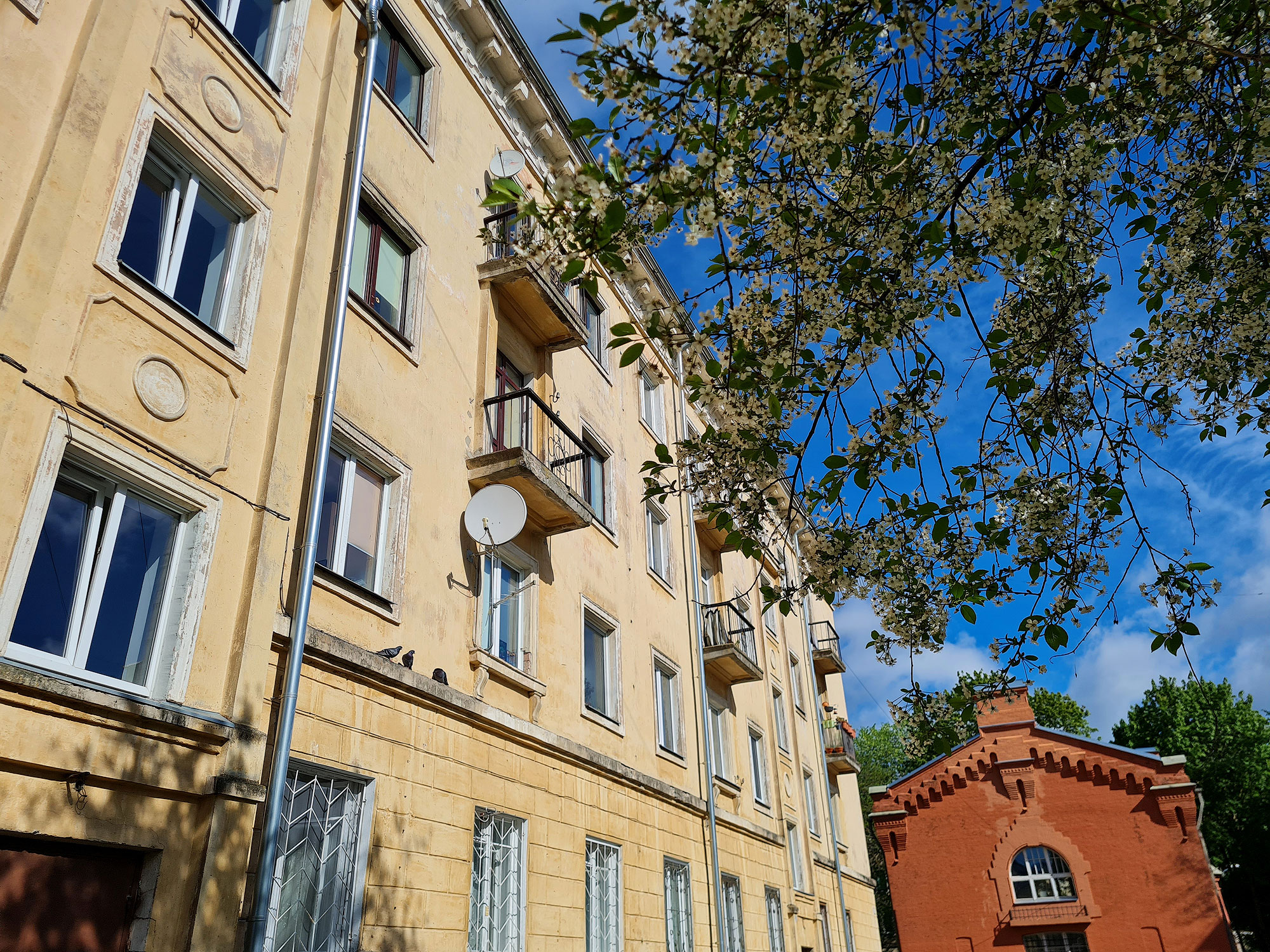The impressive residential buildings on Joala and Kose streets were built right at the beginning of the 1950s. The wooden houses at these locations had burned down, although Kreenholm factory was not damaged heavily in the war in comparison to old town, which was almost destroyed during the bombing in 1944. The reason was purely practical – either winning country needed industry. The plan of the architects at the time was more ambitious than what we see in reality today: they also planned a gorgeous town square and many more residential buildings. Even so, a school, a culture house, a park and some residential buildings were constructed. The most remarkable of them is Joala 11, which resembles houses similar to St. Petersburg and even has some elements of a baroque castle.
The residential buildings with baroque details at Kose 1a and 3 are worth special attention. Look at the magnificent facade of the building and the corner tower. They resemble the Old Town of Narva before the war, because in the early 1950s when the ruins were still standing, the idea of rebuilding had not yet died out.
Stalinist residential buildings were gorgeous inside and out. These houses are characterized by stucco decoration, formal and spacious staircases, high ceilings and rather large kitchens. Each apartment was intended for one family, but in cities, including Narva, where there was a shortage of residential space, several households were forced to live together. When the accommodation situation improved, the shared apartments shifted to possession by just one household. In the 1980s, there were no more shared apartments in Narva.
In the first half of the 1950s, life in Narva was no longer as difficult as it was right after the war.
After the war, people were not demanding, and according to their memories, life was improving at a fast pace. A man born in 1938 recalls: “You understand, Stalin was like a physical father to us. How? Well, because we were growing up… we didn’t understand what was going on. For example, after the war, in 1947… the war, it was 200 grams of bread. And food coupons. And after the war, Stalin immediately abolished the food coupon system. The food coupon system was over. And until his death, until 1953, there was a reduction in prices every year. And the prices were reduced every time on March 8, which was Women’s Day. So on March 8, everyone would sit by the radio – there were no televisions then – and wait for reduction of prices again. And every time food or something else became cheaper.”
In 1950, a 15-year-old girl who came to Narva to pick up her sisters recalls how she ended up in Narva: “But then I came to my grandmother’s house and she tells me: “Go quickly to your sisters, they came from Narva, they came with the instructor, look – they are wearing silk dresses, they brought bread and other things, they brought lard, they are dressed so nicely…”
Here is a recollection of life in a shared apartment: “At first, everyone lived mainly in shared apartments. There were no private apartments. Instead there was an apartment and it was shared by several families. At that time, we lived next to the school, there were three families. One family had a lot of children, they had a bigger room, but we had a 9-square -meter room for the four of us. We lived in nine square meters and took in a few more people. When relatives came, before they got their jobs and moved to a dormitory [they stayed with us]. And untill… let me think…, until 1964-1965, we always had someone living with us.”
A young woman who settled in Narva with her family in 1955, a few years after Stalin’s death, recalls: “Every Narva resident had come from elsewhere. The apartments were already complete and move in ready. When people came they got the keys on the next day.” Mass construction of low-cost and fast-construction residential buildings of Khrushchev period known as Khrushchevka’s began at that time. Construction of Narva hydroelectric power plant was finished, and the Balti Electric Power Plant was being built. Similarly to young women, men also arrived in the city. Narva became the city, where former prisoners of war were sent from Leningrad, as well as Soviet political and criminal offenders. At that time, former prisoners were not allowed to live closer than 100 kilometers to a big city. The city was also a Komsomol (youth communist organization) construction project. The city grew rapidly, in the 1960s Narva had the same number of inhabitants as it does now, nearly 55,000.
